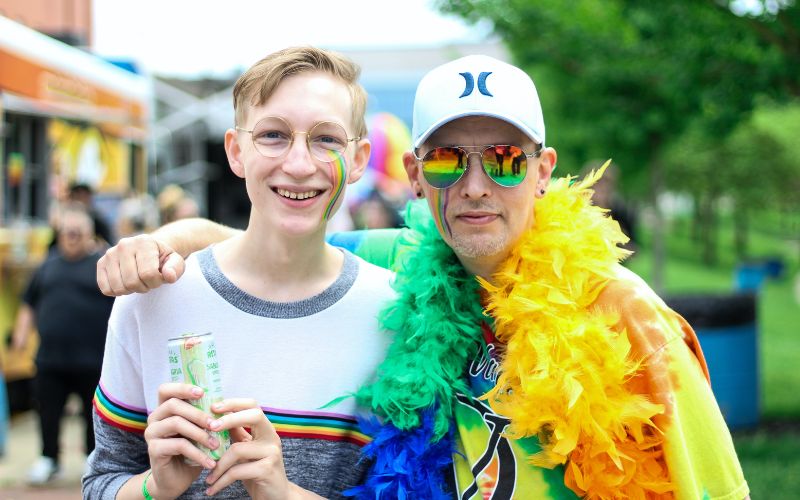
Pride month is a celebration of the LGBTQIA+ community. It is both a protest and a party, raising awareness of ongoing discrimination and celebrating love. Pride month is celebrated in June as that was the month when the Stonewall riots took place.
What are the Pride Stonewall Riots?
The Stonewall riots were important protests that took place in 1969 in the US that changed LGBTQ+ rights for a lot of people in America and around the world.
In June 1969 police raided the Stonewall Inn, a gay club in New York City. Police roughly hauled employees and patrons out of the bar, leading to six days of protests and violent clashes with law enforcement.
These protests fuelled the LGBTQ+ rights movement that demanded equality. Since 1970 Pride month has been celebrated in many countries around the world with events and pride parades every June.
Our 5 Tips for Delivering Lessons on Pride
Pride is a topic that should be discussed in schools and colleges. Here are our top five tips for delivering effective and inclusive lessons on Pride.
Tip 1: Split the topic of Pride into key focus areas
We acknowledge that Pride is a complex topic to cover as it has so many different discussion areas. To help we have created three 15-minute lessons for teachers, each with a main message. Our lessons include:
Lesson 1 – What is Pride and why does it matter?
- Pride is all about celebrating diversity and our differences
- Pride is worldwide, it’s not new
- LGBTQ+ rights have improved a lot but it is important to continue to celebrate pride month to raise awareness of ongoing discrimination
Lesson 2 – What’s it like growing up LGBTQ+ in Britain?
- Ask your students to put themselves in the shoes of someone growing up LGBTQ+ and develop empathy to what it must be like
- We live in a diverse country – empathy and respect are important for all of us
Lesson 3 – How can we be an ally
- People who aren’t part of the LGBTQ+ community can be important allies
- We can all support our friends or siblings who struggle with their sexuality or identity by listening to them, taking them seriously, and educating ourselves on what matters to them.
Having a clear structure to your lessons helps drive the engagement of your students, encouraging them to interact with the topic and each other.
Tip 2: Create a Safe Space for Pride
It is vital during these lessons and discussions that you create a safe, inclusive space for students. This includes ground rules for appropriate behaviour and language used during the lessons. It’s important that all students feel safe during these discussions, particularly if they belong to the LGBTQ+ community.
How to create safe spaces for meaningful discussions
A partnership agreement can be a useful tool. This video takes you through to how use a partnership agreement to create a safe space for meaningful discussions.
Do this at the start of term and remind pupils of the partnership agreement and ground rules every lesson. Make sure pupils know who to talk to if they find anything triggering in the lesson and signpost them to relevant support organisations.
Remember to also ensure homophobic comments are challenged and sufficiently addressed if they should come up.
Tip 3: Prepare for Possible Questions about Pride
Make sure you are prepared for any questions that may come up during these lessons. Some common questions are:
- ‘Why isn’t there a celebration for straight, non-LGBTQ+ people?’
- ‘What does LGBTQ+ or LGBTQIA+ stand for?’
- ‘Why should non LGBTQ+ individuals celebrate Pride?’
We have answers to these questions in our lesson plans. If you are interested in accessing these lessons please get in touch today with Nicole@lifelessons.co.uk
Tip 4: Discuss and Listen
It is important not to treat these lessons on Pride like a lecture. Rather our watch, discuss and do method allows learners to interact with the material and relate it back to their own lives and experiences.
Is there a right way to express your sexuality? Do you see differences based on race, gender and ability?
We find when students watch their peers describing their personal experience and teachers facilitating the discussion, they can relate better than when a teacher or authority figure explains the subject matter.
Empathy is an important part of respecting others, and we want to encourage young people to consider the world from other peoples perspectives.
Tip 5: Have Support Available
Always ensure there is support available for students by signposting them to helpful organisations such as:
Stonewall
- A charity for LGBTQ+ rights
- UK www.stonewall.org.uk
Childline
- Call for free 0800 1111
- Chat online www.childline.org.uk
The Proud Trust
- Resources for LGBTQ+ young people
- www.theproudtrust.org
Remember to also follow your schools safeguarding procedures if you are concerned about any of your students or they request any additional support.
We hope these tips and our free lesson plans help you navigate teaching lessons during Pride month.
Did you know our Life Lessons Partner Schools get weekly FREE in the News lessons to reflect relevant topical issues. We also have a video library of over 300+ hours of footage from both young people and experts to make it easier for you to plan and deliver your school’s RSE curriculum.
